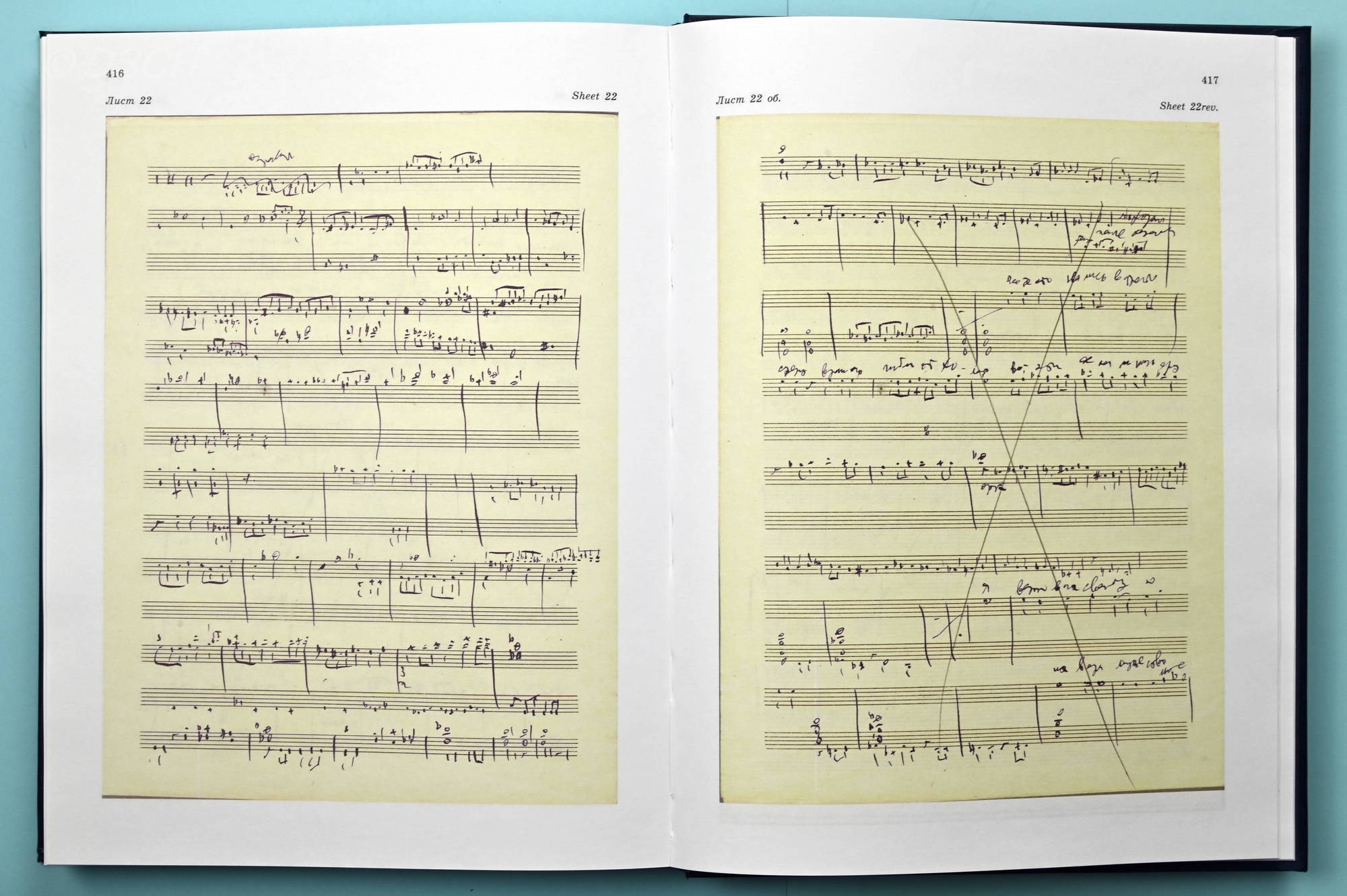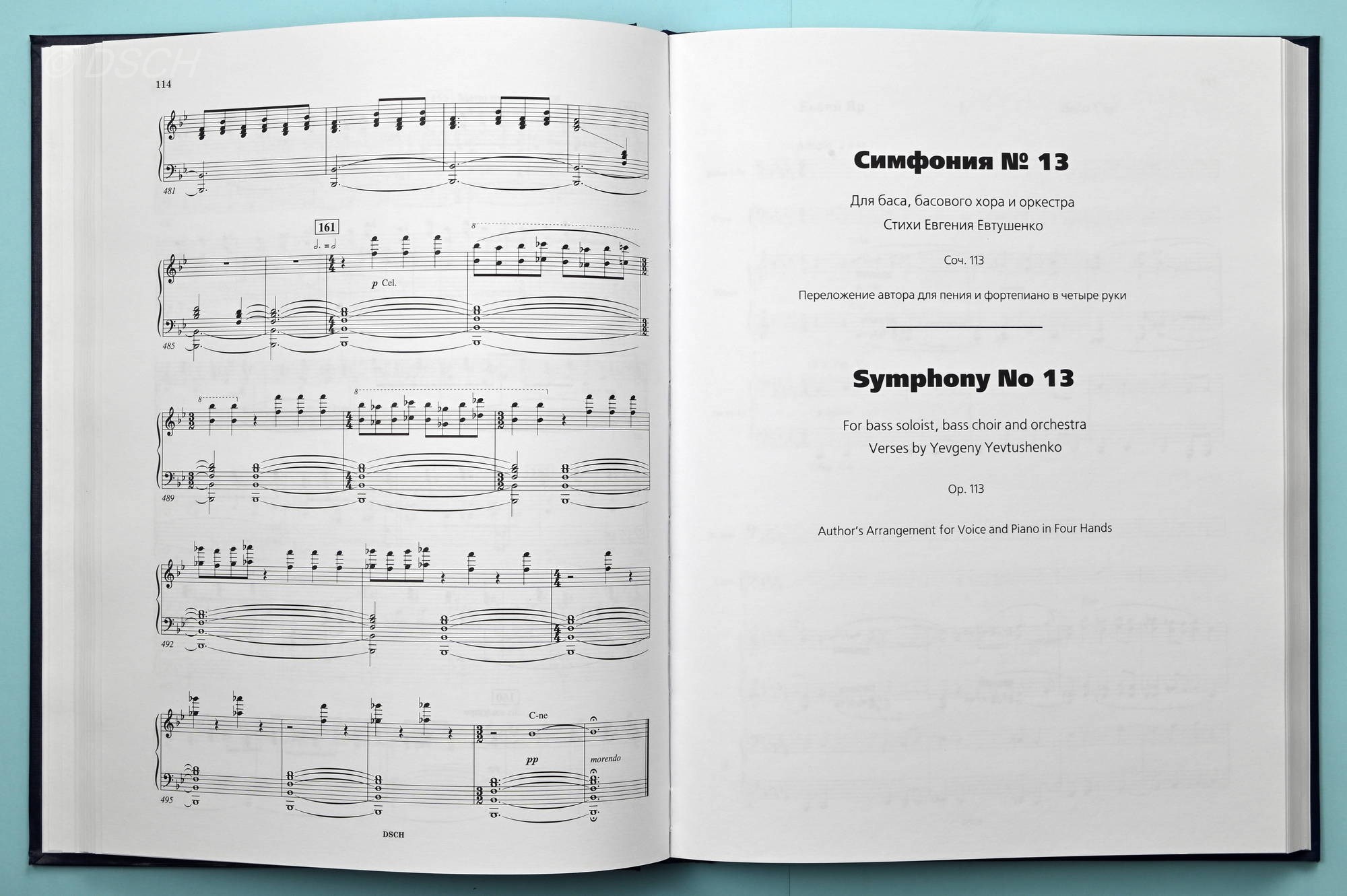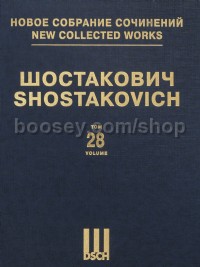Symphony No. 13 Op113 Piano Score (New Collected Works vol.28)
Symphony No. 13 Op113 Piano Score (New Collected Works vol.28)
* Estimated price converted from UK retail price
Click below to view music sample pages


Shostakovich left on the same evening of the day the last movement was completed (20 July 1962) for Kiev12 to meet Boris Gmyrya, then on 23 July13 he went to Ust-Narva to see Evgeny Mravinsky, who were to participate in the premiere of the symphony. Some time later, however, both musicians declined to perform. So, it can be confirmed that by the time Gmyrya and Mravinsky acquainted themselves with the symphony during the third week of July, the piano score had already been completed. Yevtushenko made special mention of this: “...toward the end of July he [Shostakovich] invited me to visit him and placed on the piano a piano score on which was written ‘Thirteenth Symphony’. Shostakovich then began the four-hand arrangement of the symphony for piano, which he wrote to Glikman about on 3 August 1962: “I am now doing the arrangement in four hands of the 13th symphony.”19 Ten days later in a letter to Levon Atovmian, the composer said, “I have finished the 13th symphony,” possibly meaning that he had finished the arrangement. It is likely that Shostakovich initially did the four-hand arrangement in order to present the symphony at the Union of Composers, the same as he did with his other orchestral opuses—the Ninth, Eleventh, Twelfth and Fifteenth symphonies. However, it has still not been established whether the Thirteenth Symphony was ever performed using this four-hand arrangement.
Instrumentation:
Piccolo, 2 Flutes, 3 Oboes (III = Cor anglais), 3 Clarinets (B flat and A; III = E flat and Bass), 3 Bassoons (III = Contrabassoon), 4 Horns, 3 Trumpets, 3 Trombones, Tuba, Timpani, Triangle, Castanets, Wood block, Tambourine, Side drum, Whip, Cymbals, Bass drum, Gong, Campanelli, Campane, Xylofone, Celesta, Harp (2–4), Piano, Bass soloist, choir of 40–100 bass voices, 1st Violins (16–20), 2nd Violins (14–18), Violas (12–16), Double-basses (10–14 five-string specified)
This ambitious series by DSCH, the exclusive publisher of the works of Dmitri Shostakovich, when complete, will run to 150 volumes.
Based on authentic manuscripts, accompanied by commentaries in Russian and in English, each volume contains new engravings, articles relating to the history of the compositions, facsimile pages of Shostakovich's manuscripts, outlines, and rough drafts.
Divided into 15 different "series" or genres, the edition will include nearly all the original works of the composer, and his instrumentation of music by Domenico Scarlatti, Beethoven, Schubert, Schumann, Mussorgsky, Rimsky-Korsakov, Johann Strauss, Youmans, Braga, Tishchenko, and others.
25% of the New Collected Works will be made up of previously unpublished material: over 80 of his works are being published here for the first time. Many of these previously unknown works could not be published or performed during the composer's lifetime for ideological reasons.
The fifteen "series" within the edition comprise:
I: Symphonies (vols 1-30)
II: Orchestra Compositions (vols 31-37)
III: Instrumental Concertos (vols 38-49)
IV: Compositions for the Stage (vols 50-67)
V: Suites from Operas and Ballets (vols 68-72)
VI: Compositions for Choir and Orchestra (With or Without Soloists) (vols 73-83)
VII: Unaccompanied Choral Compositions/Arrangements of Russian Folksongs (vols 84-86)
VIII: Compositions for Solo Voice(S) With Orchestra (vols 87-90)
IX: Chamber Compositions for Voice and Songs (vols 91-97)
X: Chamber Instrumental Ensembles (vols 98-105)
XI: Instrumental Sonatas(vols 106-108)
XII: Piano Compositions (vols 109-115)
XIII: Incidental Music (vols 116-121)
XIV: Film Music (vols 122-145)
XV: The Works of Other Composers, Instrumentation by Shostakovich (vols 146-150)




